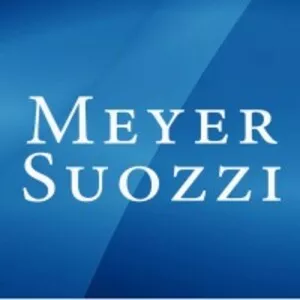Inartful or imprecise language of releases can lead to needless and costly litigation. The abundance of cases challenging the scope of releases that have been drafted and entered into with the intention of settling disputes underscores how important it is to take care in using precise language when crafting the release.
Release of Fraud and Unknown Claims
Principal sources of litigation over the scope of releases are whether the release at issue covers fraud claims and/or "unknown" claims. The Appellate Division, First Department's new decision arising out of the Trump family dispute in Trump v Trump, 2023 NY Slip Op 03427 (1stDep't Decided June 22, 2023) provides not only insight into what language to use in a release, but also authority supporting the enforcement of a release over unknown claims, including for fraud, even without actually stating that the release encompasses "known and unknown" claims.
The leading New York Court of Appeals decision laying out the governing principles and standards concerning the scope and enforceability of releases is Centro Empresarial Cempresa S.A. v América Móvil, S.A.B. de C.V., 17 NY3d 269 (2011). As stated there, in essence, a release, like any other contract, may be challenged and rescinded based upon any of the traditional grounds to void an agreement, including fraud. Moreover, a release may be deemed to encompass fraud claims unless the fraud allegedly relied upon to enter into the release is separate from the underlying fraud claims that were part of the existing dispute. Further, the release may be deemed to cover "unknown" claims, including of fraud, if the court finds the release was intended to encompass such unknown claims and "fairly and knowingly" made. I have explained these principles in prior posts. See,e.g., Challenging Releases and Settlements Based on Fraudulent Inducement is a Challenge.
In view of these principles, if a settlement results and is truly intended to resolve and extinguish both any type of fraud claims as well as any claims that are not even known at the time the release is entered into, it would be prudent to make sure the release explicitly states that it covers those claims. Thus, the release should state that among the claims to be released are "any and all claims of fraud, misrepresentation or the like, including but not limited to fraud or misrepresentation relating to the release itself," as well as "known and unknown" claims. It would also be wise to include in the release an acknowledgement that it was "fairly and knowingly" entered into. If in fact the release is not intended to cover such claims, obviously, the releasing party should resist any such language in the release. Intentions and leverage should dictate the content of the release relating to such claims, rather than simple impression.
When such language is not explicitly contained in the release, the releasing party may have some wiggle room to create issues and potentially re-litigate or raise claims that were intended to be extinguished. That is what happened in the Trump case recently decided by the First Department, but both the Commercial Division and the First Department rejected the plaintiff's attempt to pursue her claims in the face of the release she signed.
Interestingly, the plaintiff in Trump made the strategic decision to avoid arguing that the release she gave to her uncle Donald (and others) was induced by fraud so as to render it void. (Copies of the appellant, respondents and reply briefs may be obtained by clinking on the hyperlinks.) Instead, she argued that the release never covered, in the first instance, her underlying claims (which did include fraud) because she allegedly was not aware of them when she signed the release and did not fairly and knowingly release them. Thus, she claimed the release did not cover "unknown" claims. She asserted that the defendants had the burden of showing unknown claims were "clearly and unambiguously" covered, and "fairly and knowingly" released, standards which the First Department accepted and applied (unfavorably to her).
The release at issue did not expressly include "unknown" claims or include "fraud" claims. Nevertheless, both the Commercial Division and the First Department ruled that the release was broad enough to include such claims, even though not explicitly referenced. The First Department relied upon and referenced certain broad language of the release, commenting:
Defendants also met their burden of establishing that the general releases "clearly and unambiguously" reached the previously unknown claims asserted in this lawsuit (Centro, 17 NY3d at 276-277). Supreme Court carefully analyzed the language of the broad general releases, and determined that the language "all actions" and "causes of action" that plaintiff "ever had" or "can, shall or may, have" revealed an intention to release all claims, including unknown claims, as part of their "global settlement." While plaintiff argues that the parties should have specified that this language would reach "unknown" claims, this was not necessary given the parties' clear intent to encompass all possible claims that could be brought then or in the future.
The First Department's decision represents strong authority for extinguishing unknown claims even where the release does not expressly so provide. The issue has been a bit more unclear based upon the existing case law. See,e.g., Desiderio v. Geico General Ins. Co., 107 A.D.3d 662 (2d Dep't 2013) (release of "unknown" claims must be clear and therefore motion to dismiss denied); Meisel v. Grunberg, 521 F. App'x 3 (2d Cir. 2013) ("Specifically, because the parties' release did not include future claims, the parties may not have intended it to include claims for fraud."); E*Trade Financial Corp. v. Deutsche Bank AG, 420 F. Supp. 2d 273, 280-84 (S.D.N.Y. 2006) (release did not specifically" address[] or resolve[] claims unknown"); Maddolini Jewelers, Inc. v. Rolex Watch U.S.A., Inc., 354 F. Supp. 2d 293 (S.D.N.Y. 2004) ("New York law does not construe a general release to bar claims for injuries unknown at the time the release was executed, even when the release contains broad language."); Bushkin, Gaims, Gaines, Jonas & Stream v. Garber, 677 F. Supp. 774, 776 (S.D.N.Y. 1988) (where release did not contain' known or unknown' language "it could" not bar relief for an injury unknown at the time of the release"); Kafa Investments, LLC v. 2170-2178 Broadway, LLC, 958 N.Y.S.2d 577, 582 (Sup. Ct. N.Y. County 2013) (release covered unknown fraud claims where"[t]he release language. . . include[d] the phrase'whether known or unknown.'The Court must interpret the language of the release according to its terms."), affd, 114 A.D.3d 433 (specific" known and unknown" language in release barred action for fraud).
Commentary
While the defendants in Trump were able to dodge the bullet of the overall claims (albeit after extensive litigation of the issue), as cited above, there is case law questioning the inclusion of unknown claims when not referenced in a release. The safest way to mitigate litigating over the issue is to be precise with the language of the release and simply state it includes any claims of fraud as well as unknown claims.
The content of this article is intended to provide a general guide to the subject matter. Specialist advice should be sought about your specific circumstances.

